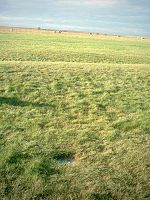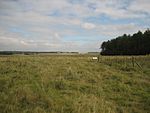Heel Stone
Stonehenge

The Heel Stone is a single large block of sarsen stone standing within the Avenue outside the entrance of the Stonehenge earthwork in Wiltshire, England. In section it is sub-rectangular, with a minimum thickness of 2.4 metres (7 ft 10 in), rising to a tapered top about 4.7 metres (15 ft) high. Excavation has shown that a further 1.2 metres (3 ft 11 in) is buried in the ground. It is 77.4 metres (254 ft) from the centre of Stonehenge circle. It leans towards the southwest nearly 27 degrees from the vertical. The stone has an overall girth of 7.6 metres (25 ft) and weighs about 35 tons. It is surrounded by the Heelstone Ditch.
Excerpt from the Wikipedia article Heel Stone (License: CC BY-SA 3.0, Authors, Images).Heel Stone
A303,
Geographical coordinates (GPS) Address Phone number Website Nearby Places Show on map
Geographical coordinates (GPS)
| Latitude | Longitude |
|---|---|
| N 51.179305 ° | E -1.825302 ° |
Address
Stonehenge
A303
SP4 7DE , Amesbury
England, United Kingdom
Open on Google Maps









